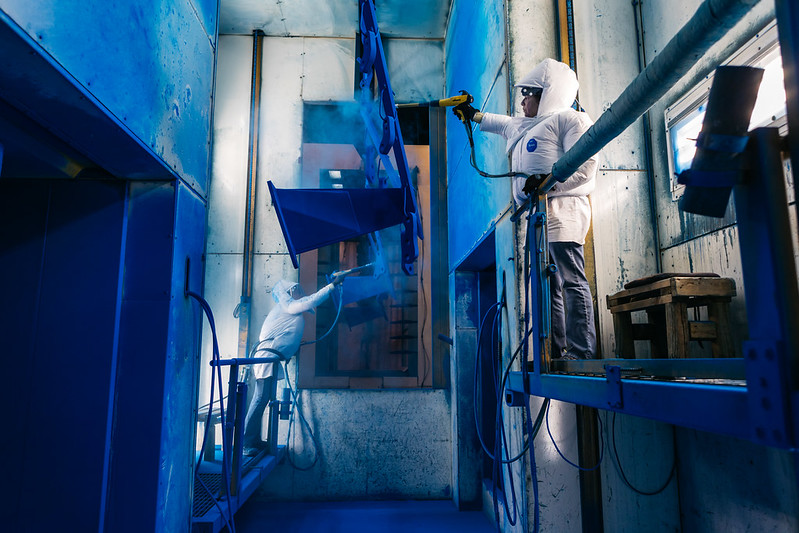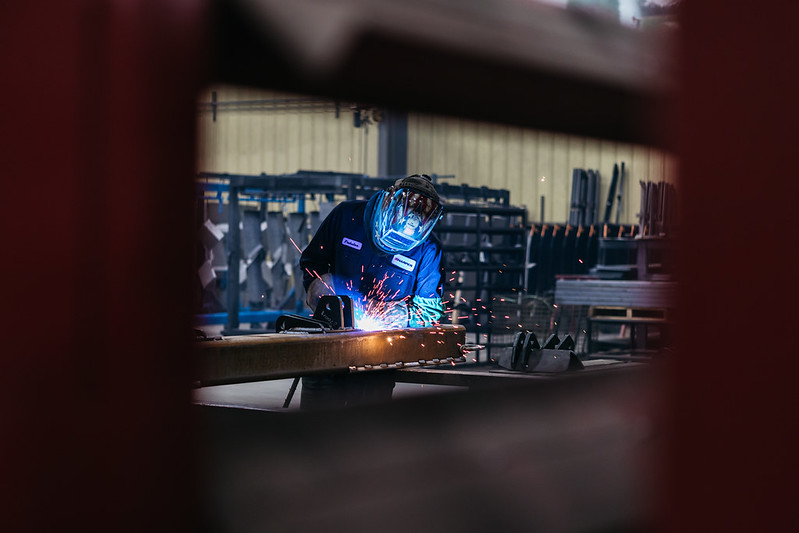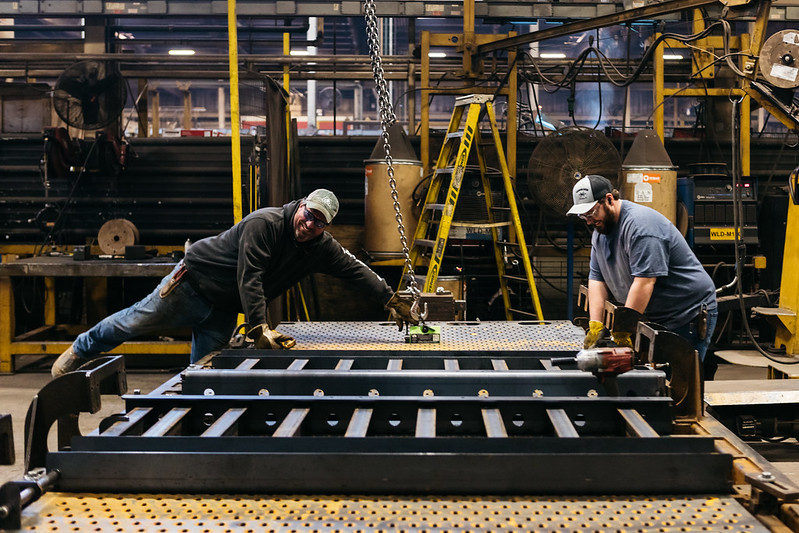In both the long- and short-term, there are several developing trends that will define the future of the equipment manufacturing industry.
In order to navigate challenges and take advantage of opportunities brought forth by the industry, equipment manufacturers must develop a deep understanding of these trends and how they will evolve over time. More importantly, players in the industry must be able to evaluate their potential impact on the industry and the customers that they serve.
Keeping that in mind, let’s take a look at the five key trends that are poised to impact equipment manufacturers the most this year:
The Evolving Manufacturing Workforce
- Julie Davis, AEM SVP of People Strategy
The equipment manufacturing industry continues to struggle with a significant skills gap. Many experienced workers are retiring, and there is a shortage of younger workers with the necessary technical skills for the job. This requires a focus on upskilling and reskilling the existing workforce, as well as pushing the integration of artificial intelligence (AI) and automation forward.
AI and automation can significantly offset the diminishing and less experienced workforce in manufacturing by taking over repetitive, hazardous, and time-consuming tasks. This allows human workers to focus on more complex and strategic activities that require critical thinking and problem-solving skills.
Companies must also invest in continuous learning opportunities and partnerships with educational institutions to bridge the skills gap and prepare the workforce for the evolving technological landscape.
The integration of AI and automation is transforming job roles and creating new opportunities within the industry. While some traditional roles may become obsolete, new positions requiring advanced technical skills will continue to emerge.
Agriculture's Focus on Interoperability
- Austin Gellings, AEM Senior Director of Agriculture Services
When looking at the agricultural landscape over the course of 2025, there are a number of things that will continue to impact the way agricultural equipment manufacturers operate. Things like commodity prices, tariffs, and regulation are certainly all very important topics – but one topic that may not come to mind, although it should, is interoperability.
Today’s equipment customers are used to a certain level of interoperability due to the connected world that we live in today. These expectations are no different for their operations; farmers and contractors alike expect a certain level of seamlessness, from machine-to-machine connection to data-to-data platform connection. As machines and operations become increasingly interconnected and diversified, it is important that these connections, whether digital or physical, happen seamlessly.
Fortunately, this is an area where our industry is already doing a great deal of work. From the physical side with ISOBUS, or High-Speed ISOBUS, to the digital side through projects like AgIN or Mic 4.0, the industry is working through both sectors to make integration of new pieces of equipment and data sources easier than ever. With farmers and contractors continuing to diversify their equipment lines, and the need for data rising to continue to meet the ever-changing needs of today’s equipment customers, the need for interoperability of these various platforms is only going to increase in the future.
Research And Development for Construction Technology
- Sara Feuling, AEM Senior Director of Construction
As manufacturers continue to embrace and implement new technology, including artificial intelligence (AI), autonomy, and interoperability, they rely on a framework of standards to help guide their research and development (R&D). Many times, those standards come through industry consensus and best practice. Sometimes, they come from regulations.
It’s not just that regulations exist – regulations can be good, as they give us something to strive for, to design to, something constant. R&D is built around regulations that already exist. Sometimes it’s a lack of regulation that hinders R&D, and a lack of clarity of what will be expected in the future. There are many things that drive regulation – public interest, safety, and political concerns, to name a few. Customers may also drive regulation – building trust and reflecting the values of society.
Manufacturers can continue to be successful if they engage with regulatory efforts through AEM, as well as through independent channels – stay informed and up to date on the issues that may impact and affect R&D, as well as advocate for regulations that may drive future standards.
While regulations are important to and can have a significant impact on our industry, regulation, or the lack thereof, does not need to stop manufacturers from thinking big to implement technology and meet the needs of their end users.
Data Collection Challenges Throughout the Supply Chain
- Jason Malcore, AEM Senior Director of Safety & Product Leadership
Over the last 25 years, rules have started to focus more and more on chronic industry issues such as recyclability, climate change, and chemical hazards. One of the primary aftereffects of complying with these new types of rules is the need to collect, manage, and analyze large amounts of data from the supply chain.
While the data requirements of this new regulatory environment may be clear, the process of collecting this data will be incredibly challenging. The off-road equipment industry has a supply chain that is more than 20 layers deep, with products that contain more than 100,000 parts from tens of thousands of unique suppliers.
Many components are manufactured by small companies that do not have the resources or expertise to answer the questions posed to them, not to mention the lack of awareness of the rules themselves. In some cases, international suppliers, who are not the regulated party under these rules, have little incentive to provide this information to downstream customers that are not purchasing in large enough quantities. In other cases, certain manufacturers looking to protect their product intellectual property may refuse to disclose this type of information, for fear of losing market share. In any case, the challenge for our industry will be to raise awareness of these new rules, explain why they are important to our industry, and educate our supply chain on how to comply with our requests.
Regulatory Efforts Ramp Up in Canada
- Alex Russ, AEM Senior Advisor of Global Public Policy
AEM continues to expand its advocacy capabilities in Canada to ensure that the association is well positioned to advocate on behalf of its member companies. The equipment manufacturing industry is a critical part of Canada’s long-term economic prosperity; equipment manufacturers support 152,000 jobs across all provinces and contribute $17.2 billion to the country’s GDP every year. Federal and provincial regulations and legislation directly impact how equipment is developed, manufactured, and distributed to Canadian farmers and workers from Cape Spear and Newfoundland, to Boundary Peak in the Yukon.
As the North American trade association representing the off-road equipment manufacturing industry, it is critically important that AEM’s Canadian member companies have the best possible representation so that they can continue to invest in their communities, grow their businesses, and hire more Canadians. Engagement with government officials, regulators, civil society groups, and other stakeholders is an essential part of creating new market opportunities for equipment manufacturers while also increasing foreign direct investment in Canada.
Throughout 2025, AEM will launch a series of advocacy initiatives across Canada to strength our industry’s voice and build a platform for public policy development to address pressing trade, workforce development, infrastructure, and agriculture challenges facing the equipment manufacturing industry in Canada, and the communities we proudly serve.





